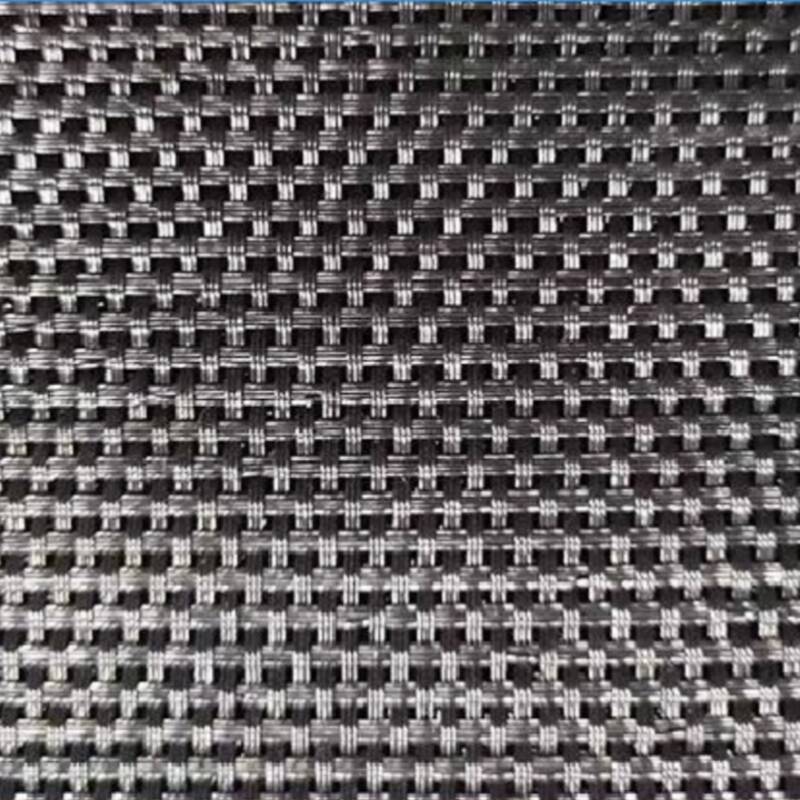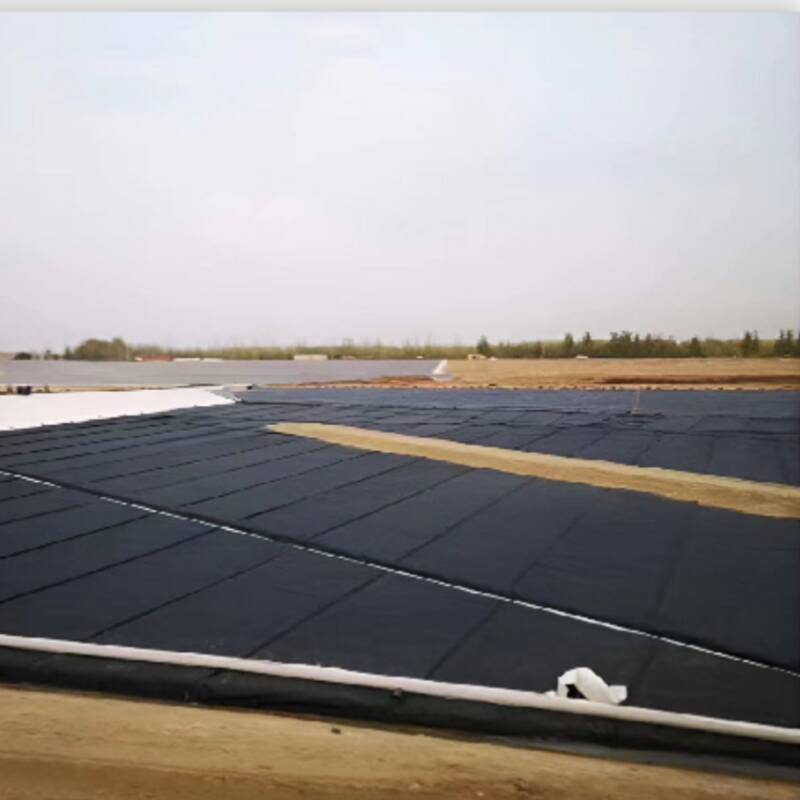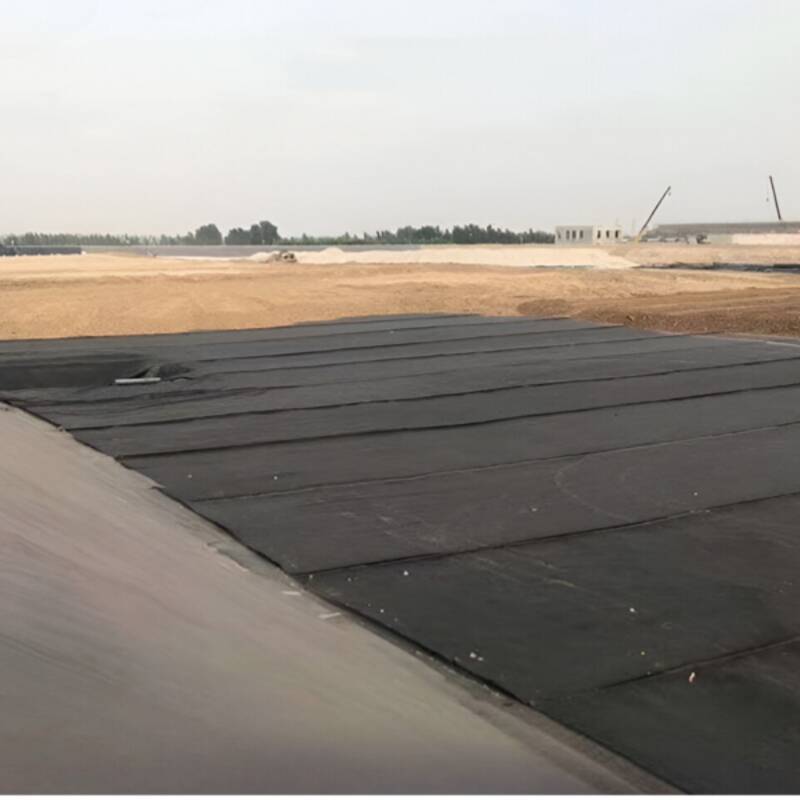-
About UsZHONGTAI HENGBANG Engineering Technology Co., Ltd. is located in the Academician Entrepreneurship Base of Tai'an National High-Tech Industrial Development Zone, Shandong Province. The company is a comprehensive service provider specializing in engineering consulting and design, materials R&D and manufacturing, as well as operations and maintenance. With strong technical expertise and robust R&D capabilities, its products are primarily applied in critical areas such as water conservancy infrastructure projects, transportation infrastructure initiatives, and environmental protection solutions for isolating and preventing leakage from urban waste and highly hazardous industrial solid waste.

-
ProductsZHONGTAI HENGBANG Engineering Technology Co., Ltd. boasts production lines sourced from countries including Germany, Italy, Denmark, Belgium, and Switzerland, adhering to rigorous quality management systems and testing standards. We are equipped with advanced testing equipment capable of evaluating tensile strength, creep resistance, UV protection, water permeability, flame retardancy, antistatic properties, chemical corrosion resistance, and oxidation performance.

-
Application CasesThe product is primarily used in hydraulic infrastructure projects, transportation infrastructure projects, and environmental protection applications—including the isolation and impermeability of municipal waste and highly hazardous industrial solid waste.

-
BlogPrioritizing technological advancement and innovation, our company is committed to fulfilling user needs to the fullest extent possible.





Geotextile Filter Mat
Geotextile filter fabric is a black, mesh-like geosynthetic material made from virgin polypropylene granules. It incorporates a specific proportion of carbon black masterbatch, along with anti-aging agents, antioxidants, UV absorbers, and stabilizers. The material is processed by drawing the raw material into oriented round or flat filaments, which are then woven together to create a durable, age-resistant nonwoven geotextile. Geotextile filter fabric features a three-dimensional plastic mesh structure, with permeable geotextile layers bonded on both sides. This innovative material is specifically designed as a filtration solution for landfill applications, primarily used for underground drainage filtration in landfills, surface infiltration control at closure areas, and efficient collection and treatment of leachate.
Keywords:
Detailed description
Overview:
Geotextile filter fabric is a black, mesh-like geosynthetic material made from virgin polypropylene granules. It incorporates a specific proportion of carbon black masterbatch, along with anti-aging agents, antioxidants, UV absorbers, and stabilizers. The material is produced by orienting and stretching the raw material into round or flat filaments, which are then woven together to create an age-resistant, non-woven geotextile. Geotextile filter fabric features a three-dimensional plastic mesh structure, with permeable geotextile layers bonded on both sides. This innovative material is specifically designed as a filtration solution for landfill applications, playing a key role in underground drainage filtration, surface infiltration control at landfill capping systems, and leachate collection and treatment processes.
Product features/benefits:
Seepage control: As a permeable material, geogrids help prevent water loss from soil layers, effectively mitigating soil erosion and natural disasters such as landslides and debris flows.
Reinforcement effect: Geogrids effectively enhance the stability and load-bearing capacity of soil, preventing cracks and deformations in infrastructure such as roads and railways caused by foundation settlement.
Filtering function: Geogrids can filter out impurities and contaminants from soil layers, helping to maintain the stability and permeability of the soil.
Separation function: Geogrids effectively separate and isolate different soil layers, preventing mutual infiltration and contamination between them.
Application scope:
1. Road Construction: In the construction of roads, highways, railways, and other infrastructure, geogrids are used to reinforce roadbeds, prevent foundation settlement, and stabilize road shoulders, among other applications.
2. Hydraulic Engineering: In hydraulic structures such as dams, canals, and flood control systems, geogrids are used to reinforce embankments, prevent seepage, and protect slopes.
3. Civil Engineering: In construction projects such as building construction and basement excavation, geogrids are used to strengthen foundations, reinforce bases, and prevent soil slope failures.
4. Environmental Engineering: In environmental projects such as landfills, manure management, and site remediation, geogrids are used for functions like impermeability, load-bearing, and isolation.
Technical specifications:
|
Serial Number |
Project |
Metrics |
|
|
Geotextile filter for collecting groundwater and surface infiltration water on landfill sites |
Geotextile Filter for Leachate Collection |
||
|
1 |
Tensile strength / (kN/m) – longitudinal |
≥45 |
|
|
1 |
Tensile strength / (kN/m) – Transverse |
≥30 |
|
|
2 |
Elongation at break (%) – Longitudinal |
25 |
|
|
2 |
Elongation at Break (%) – Transverse |
≤15 |
|
|
3 |
Tear Strength / kN – Longitudinal |
≥0.6 |
|
|
3 |
Tear Strength / kN – Transverse |
≥0.4 |
|
|
4 |
Puncture Strength /kN |
≥0.4 |
|
|
5 |
Tear Strength /kN |
≥3.0 |
|
|
6 |
Equivalent Aperture O₀/mm |
0.10–0.30 |
0.30–0.80 |
|
7 |
Vertical Permeability Coefficient / (cm/s) |
k × (10⁻¹ to 10⁻²), where: k = 1.0 to 9.9 |
|
|
8 |
Opening Ratio / % |
4–8 |
8–12 |
|
9 |
Mass per unit area / (g/m²) |
≥200 |
|
|
10 |
UV Resistance Performance – Tensile Strength Retention Rate / % |
≥70 |
≥85 |
|
10 |
UV Resistance Performance – Elongation at Break Retention Rate / % |
≥70 |
≥85 |
|
11 |
Acid-alkali resistance – Tensile strength retention rate / % |
≥70 |
≥85 |
|
11 |
Acid-alkali resistance performance – Elongation at break retention rate / % |
≥70 |
≥85 |





Get a product quote
We’re here to help you every step of the way! Please fill out our inquiry form, and our team will respond promptly.
ZHONGTAI HENGBANG Engineering & Technology Co., Ltd.
Address: East Section of Zhongtianmen Avenue, Tai'an High-tech Zone, Shandong Province
Service Hotline

COOKIES
Our website uses cookies and similar technologies to personalize the advertising shown to you and to help you get the best experience on our website. For more information, see our Privacy & Cookie Policy
COOKIES
Our website uses cookies and similar technologies to personalize the advertising shown to you and to help you get the best experience on our website. For more information, see our Privacy & Cookie Policy
These cookies are necessary for basic functions such as payment. Standard cookies cannot be turned off and do not store any of your information.
These cookies collect information, such as how many people are using our site or which pages are popular, to help us improve the customer experience. Turning these cookies off will mean we can't collect information to improve your experience.
These cookies enable the website to provide enhanced functionality and personalization. They may be set by us or by third-party providers whose services we have added to our pages. If you do not allow these cookies, some or all of these services may not function properly.
These cookies help us understand what you are interested in so that we can show you relevant advertising on other websites. Turning these cookies off will mean we are unable to show you any personalized advertising.

